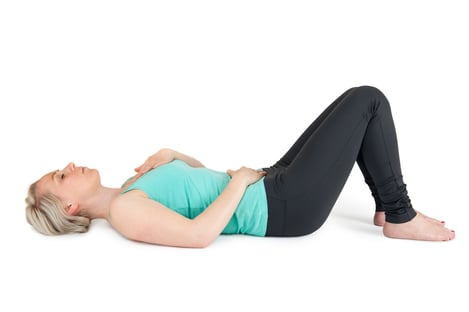 The Holiday Season is here, and we’re anticipating time to appreciate the important things in life, such as time with family and friends. However, some of us may experience stress during this time of celebration. Stress can affect each of us in multiple ways.
The Holiday Season is here, and we’re anticipating time to appreciate the important things in life, such as time with family and friends. However, some of us may experience stress during this time of celebration. Stress can affect each of us in multiple ways.
Stress often arises from a buildup of challenges, including emotional, physical, and social demands. This can manifest as increased heart rate, headaches, digestive issues, or even sleep disruption. Recognizing these signs is the first step toward finding relief.
Often, stress is caused by the accumulation of different challenges, responsibilities, emotions, and tasks involved in our day-to-day lives. Stress can manifest in our bodies in various ways. We might notice an increased heart rate and breathing, increased blood pressure, musculoskeletal pain (e.g., in the lower back), headaches, gastrointestinal issues, sleep disruption, or general fatigue.
Stress can be mitigated by reducing time spent with physical triggers such as environmental stressors, social stressors, and financial stressors. Sometimes these are harder to completely avoid during the holiday season, as it is typical to have social gatherings around this time of the year. Reducing stress could involve taking a physical break from the environment. For example, stepping outside for a walk, listening to a podcast, or mentally resetting in a new environment with an activity can help. These are proactive approaches to allow a “break” from physical stressors and offer an opportunity to return to your stressors with a fresh outlook.
Taking a mindfulness break by focusing on breathing and meditation is another very effective approach to managing or reducing stress. If controlling what is going on in your physical environment isn’t possible, you could instead take a mindful moment to be present. Short breaks of 30-60 seconds focusing on deep diaphragm breathing can help. This allows you to mentally return to your daily agenda with a clear mind.
One breathing technique is box breathing. To perform this exercise, visualize a “box” in front of you:
- Breathe in for 4 counts while tracing the first side of the box.
- Hold your breath at the top for 4 counts as you trace the second side.
- Exhale for 4 counts while tracing the third side.
- Hold the exhale for 4 counts to complete the box.
Visualizing the box as you breathe in and out, with pauses at the top and bottom, can help you reset and maintain self-compassion and positivity.
Other ways to reduce stress include maintaining healthy habits in areas you can control during the holiday season. You could focus on maintaining a healthy diet, staying consistent with an exercise routine, practicing self-care habits, and getting at least 7-8 hours of sleep per night. While the holidays come with many social and financial responsibilities and engagements, you can set yourself up for success by prioritizing nutrition, sleep, and physical activity. Additionally, avoiding binge eating or excessive alcohol intake can prevent increases in inflammation and additional stress responses in your body and mind.
While stress can often be managed with mindful habits and healthy routines, it’s important to recognize when additional support may be needed. If you are experiencing persistent emotions, thoughts, or signs of depression, anxiety, or a mental health crisis, consider reaching out to a professional for help.
Look for a way to take a moment for yourself amidst the hustle and bustle. Schedule a massage session with our NIFS massage therapist and let the stress melt away. Whether you're seeking relief from tension or simply need a break, we’re here to help you feel your best.
Book your appointment today and give yourself the gift of relaxation!


 Seriously. Stop and take a breath. Don’t judge your technique, just breathe in and out. Failure to do both in and out will likely result in you fainting, and the ERs and urgent care centers have enough to do without you coming in with a cut forehead requiring stitches.
Seriously. Stop and take a breath. Don’t judge your technique, just breathe in and out. Failure to do both in and out will likely result in you fainting, and the ERs and urgent care centers have enough to do without you coming in with a cut forehead requiring stitches.
 In The Wizard of Oz, Dorothy woke up after a terrible storm in a world she didn’t recognize. The normal that she had known no longer existed. We are “not in Kansas” (or Indiana, for that matter) anymore after COVID-19 erupted around the world. Normal is gone for the time being. Some people have lost jobs and incomes, or are forced to work from home. Some have had or are fighting the disease, and some unfortunately have lost their lives.
In The Wizard of Oz, Dorothy woke up after a terrible storm in a world she didn’t recognize. The normal that she had known no longer existed. We are “not in Kansas” (or Indiana, for that matter) anymore after COVID-19 erupted around the world. Normal is gone for the time being. Some people have lost jobs and incomes, or are forced to work from home. Some have had or are fighting the disease, and some unfortunately have lost their lives.